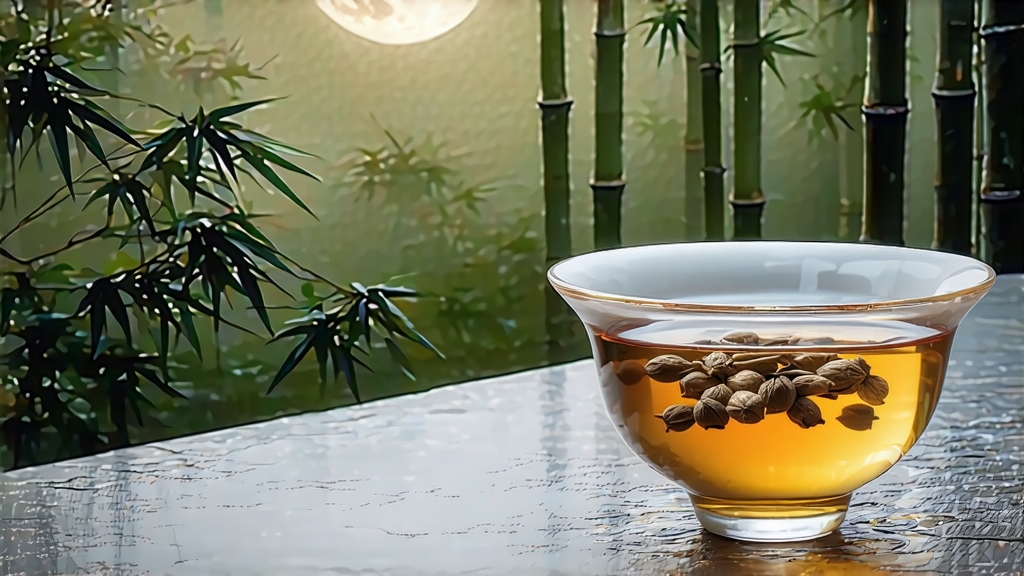
Among the six great families of Chinese tea, white tea is the least theatrical yet the most haunting: it is simply picked and dried, allowing leaf and time to finish the story. Within this minimalist lineage, Bai Hao Yin Zhen—“Silver Needle, White Down”—reigns as the aristocrat. International drinkers who meet it for the first time often whisper that they have tasted “liquid moonlight,” a phrase that would please the Song-dynasty poets who first celebrated the region now known as Fujian’s northeast coast.
Historical whispers
The written record is thin but luminous. A 1064 county gazetteer notes “white cakes pressed for the emperor’s thirst,” and a 1796 entry lists tribute of “downy buds” sent from Fuding to the Qing court. What is certain is that by the mid-19th century tea merchants in the port of Fuzhou were exporting small lots of fluffy, pale needles to Southeast Asia, where Chinese diaspora doctors prescribed them for cooling the body during feverish summers. The name “Yin Zhen” itself first appears on an 1857 customs invoice discovered in the British Library, proof that Europe met this tea while still wearing crinoline.
Terroir: two counties, one mountain spirit
Authentic Bai Hao Yin Zhen is born inside a narrow latitudinal belt between 27° and 27°30′ N, where the East China Sea’s fog meets granitic soils. Two micro-regions contend for supremacy. Fuding, wrapped in low hills of red and yellow earth, gives needles that are plump, sweet, and orchid-like. The neighboring county of Zhenghe, higher and cooler, produces slimmer needles with a cooler, metallic edge reminiscent of alpine snow water. Purists cup them side-by-side the way Burgundy lovers compare Chambolle-Musigny and Gevrey-Chambertin: same cultivar, different dialogues with stone and sky.
Cultivars: the mother trees
The local heirloom is Fuding Da Bai Hao—“Big White Down”—a large-bud varietal whose fat, down-coated apical bud can weigh three times that of an average Long Jing leaf. In the 1970s agronomists selected a clonal child, Fuding Da Hao, for even higher amino acids, but most artisans still prefer the sexual seedlings of the original population, arguing that genetic diversity adds aromatic complexity after long aging.
Plucking ritual
The law of Yin Zhen is uncompromising: only the unopened bud, plucked when it reaches 2.5–3 cm but before the first scale unfurls. Pickers work in the cool dawn of late March, fingers tilted upward to avoid bruising the tender base. A skilled woman can gather 2,000 buds an hour, yet 30,000 are needed for a single kilo of finished tea. The harvest window spans barely five days each spring; rain or heat can erase an entire year’s aristocracy in hours.
Craft: the art of doing almost nothing
Once baskets arrive at the cottage, the buds are spread one layer thick on bamboo trays woven from river reeds. For the next 36–48 hours they rest in a shaded corridor where window shutters are cracked just enough to invite a wandering breeze. Moisture drops from 75 % to 12 % without ever seeing direct sun; enzymes remain alive, quietly transforming grassy aldehydes into honey-lactones and jasmine-like linalool. When the master presses a bud between forefinger and thumb and it snaps with a brittle “ting,” the first withering is complete. A final 20-minute bake at 40 °C sets the aromatics without caramelization, leaving the bud the color of polished pewter and the scent of fresh petrichor.
Micro-fermentation & aging potential
Unlike shou mei or gong mei, Yin Zhen is not piled for post-fermentation, yet a slow oxidation continues inside the hollow bud for years. Stored in breathable paper at 60 % relative humidity and 25 °C, the tea develops notes of dried apricot, sandalwood, and camphor; after fifteen years the liquor turns deep amber and gains a texture reminiscent of light Pedro Ximénez. A 1997 Fuding Yin Zhen recently sold at auction in Guangzhou for USD 1,200 per 100 g, proof that white tea can age as nobly as raw Pu-erh.
Grading the moonlight
Top-grade needles